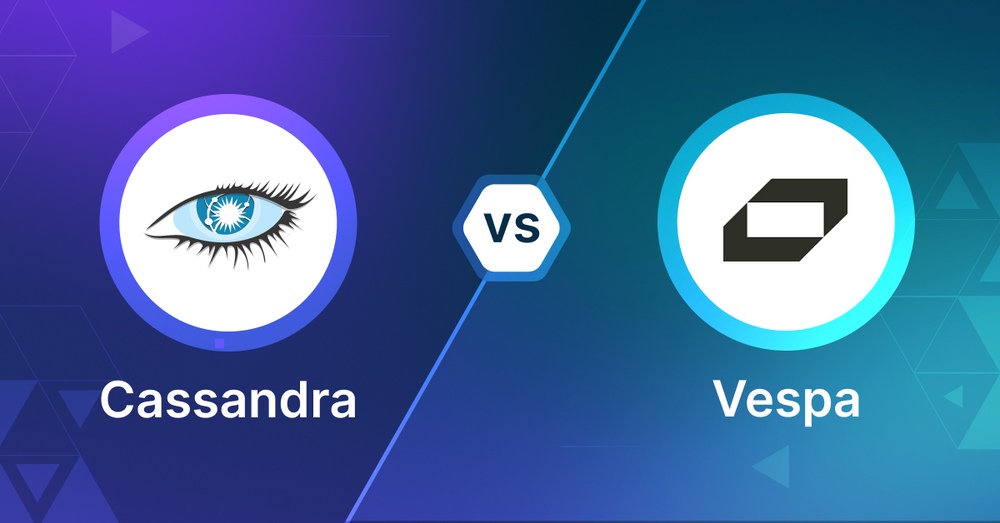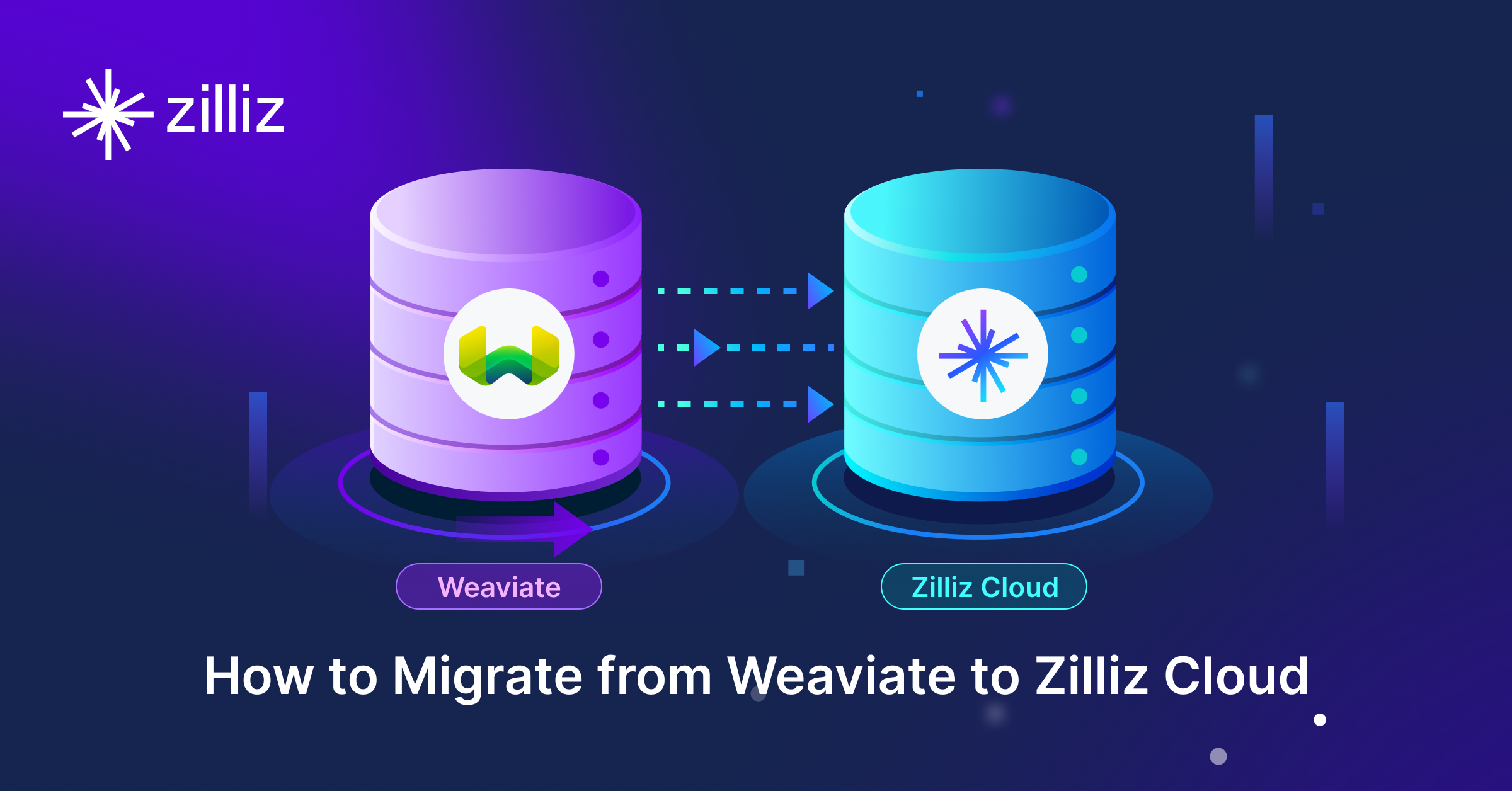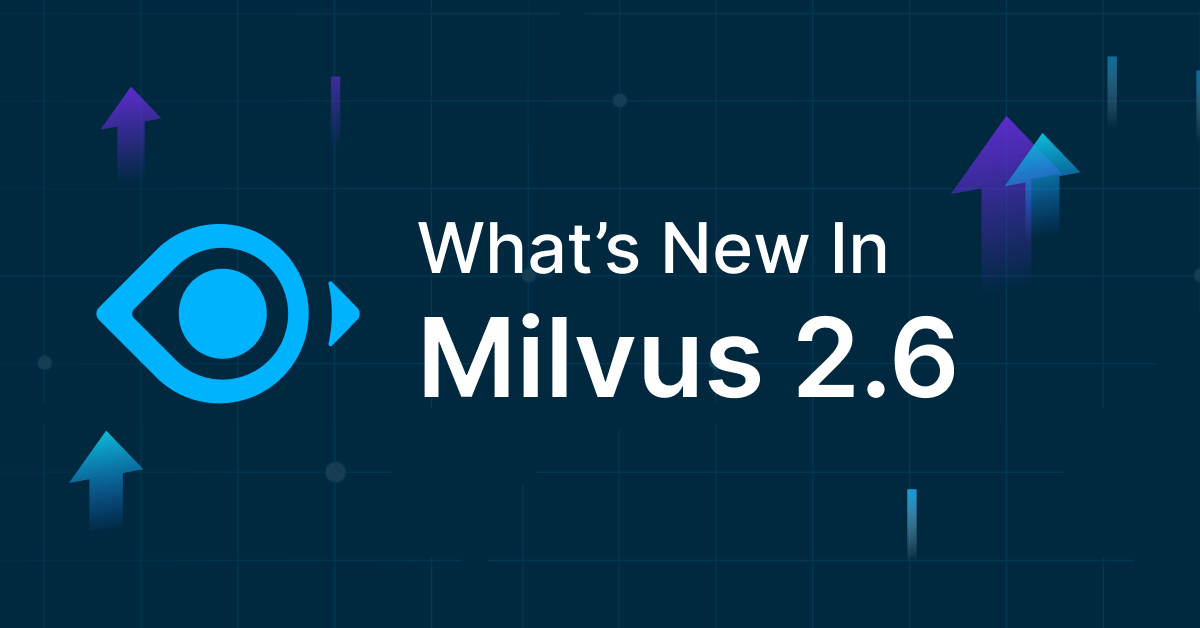Apache Cassandra vs. Vespa: Choosing the Right Vector Database for Your AI Applications

As AI-driven applications become more prevalent, developers and engineers face the challenge of selecting the right database to handle vector data efficiently. Two popular options in this space are Apache Cassandra and Vespa. This article compares these technologies to help you make an informed decision for your vector database needs.
What is a Vector Database?
Before we compare Apache Cassandra and Vespa, let's first explore the concept of vector databases.
A vector database is specifically designed to store and query high-dimensional vector embeddings, which are numerical representations of unstructured data. These vectors encode complex information, such as text's semantic meaning, images' visual features, or product attributes. By enabling efficient similarity searches, vector databases play a pivotal role in AI applications, allowing for more advanced data analysis and retrieval.
Vector databases are adopted in many use cases, including e-commerce product recommendations, content discovery platforms, anomaly detection in cybersecurity, medical image analysis, and natural language processing (NLP) tasks. They also play a crucial role in Retrieval Augmented Generation (RAG), a technique that enhances the performance of large language models (LLMs) by providing external knowledge to reduce issues like AI hallucinations.
There are many types of vector databases available in the market, including:
- Purpose-built vector databases such as Milvus, Zilliz Cloud (fully managed Milvus)
- Vector search libraries such as Faiss and Annoy.
- Lightweight vector databases such as Chroma and Milvus Lite.
- Traditional databases with vector search add-ons capable of performing small-scale vector searches.
Cassandra and Vespa represent different approaches to vector databases. Cassandra is a traditional database that has evolved to include vector search capabilities and Vespa, on the other hand, is a purpose-built vector database. It was designed from the ground up to handle vector data and perform similarity searches efficiently. As a specialized solution, Vespa focuses exclusively on vector operations and is optimized for tasks like similarity search and recommendations.
Apache Cassandra: Overview and Core Technology
Apache Cassandra is an open-source, distributed NoSQL database known for its scalability and availability. Cassandra's features include a masterless architecture for availability, scalability, tunable consistency, and a flexible data model. With the release of Cassandra 5.0, it now supports vector embeddings and vector similarity search through its Storage-Attached Indexes (SAI) feature. While this integration allows Cassandra to handle vector data, it's important to note that vector search is implemented as an extension of Cassandra's existing architecture rather than a native feature.
Cassandra's vector search functionality is built on its existing architecture. It allows users to store vector embeddings alongside other data and perform similarity searches. This integration enables Cassandra to support AI-driven applications while maintaining its strengths in handling large-scale, distributed data.
A key component of Cassandra's vector search is Storage-Attached Indexes (SAI). SAI is a highly scalable and globally distributed index that adds column-level indexes to any vector data type column. It provides high I/O throughput for Vector Search databases and other search indexing. SAI offers extensive indexing functionality, capable of indexing both queries and content (including large inputs like documents, words, and images) to capture semantics.
Vector Search is the first instance of validating the extensibility of SAI, leveraging its new modularity. This combination of Vector Search and SAI enhances Cassandra's capabilities in handling AI and machine learning workloads, making it a strong contender in the vector database space.
Vespa: Overview and Core Technology
Vespa is a powerful search engine and vector database that can handle multiple types of searches all at once. It's great at vector search, text search, and searching through structured data. This means you can use it to find similar items (like images or products), search for specific words in text, and filter results based on things like dates or numbers - all in one go. Vespa is flexible and can work with different data types, from simple numbers to complex structures.
One of Vespa's standout features is its vector search ability. You can add any vector fields to your documents, and Vespa will search through them quickly. It can even handle special vectors called tensors, useful for representing things like multi-part document embeddings. Vespa is smart about storing and searching these vectors, so it can handle large amounts of data without slowing down.
Vespa is built to be super fast and efficient. It uses its own special engine written in C++ to manage memory and do searches, which helps it perform well even when dealing with complex queries and lots of data. It's designed to keep working smoothly even when you're adding new data or handling many searches simultaneously. This makes it great for big, real-world applications that need to handle a lot of traffic and data.
Another cool thing about Vespa is that it can automatically scale up to handle more data or traffic. You can add more computers to your Vespa setup, and it will automatically spread the work across them. This means your search system can grow as your needs grow without you having to do a lot of complicated setup. Vespa can even adjust itself automatically to handle changes in how much data or traffic you have, which can help save on costs. This makes it a great choice for businesses that need a search system that can grow with them over time.
Key Differences: Apache Cassandra vs. Vespa
Search Methodology
Cassandra and Vespa approach search differently. Cassandra uses Storage-Attached Indexes (SAI) to enable vector similarity search alongside its traditional NoSQL data structure. While SAI allows for vector embeddings and searches, it is an extension to Cassandra’s architecture, not a core feature. Vespa, on the other hand, is built specifically for search, excelling in vector, text, and structured data search simultaneously. Vespa allows the addition of multiple vector fields and handles complex tensor-based vectors, making it more specialized for high-performance, multi-modal search capabilities.
Data Handling
Cassandra is designed to handle large-scale, distributed, structured, and semi-structured data, with vector data added as a newer feature via SAI. It primarily focuses on storing and retrieving data across distributed nodes. Vespa is much more flexible, effortlessly handling structured, semi-structured, and unstructured data. Its ability to process text, numerical data, and vectors together allows for greater versatility when managing complex datasets. Vespa's tensor capabilities give it an edge when working with advanced data models like embeddings in AI applications.
Scalability and Performance
Both Cassandra and Vespa are highly scalable but take different approaches. Cassandra’s masterless architecture allows it to scale horizontally across multiple nodes with ease, ensuring high availability and performance. Vespa also scales efficiently by distributing work across multiple machines, but it goes a step further by automatically adjusting to traffic and data changes without manual intervention. Vespa's memory management and specialized search engine, written in C++, ensure fast performance even when handling complex queries, whereas Cassandra’s performance is more generalized and optimized for distributed data management rather than search.
Flexibility and Customization
Cassandra offers a flexible data model, especially for distributed applications, but its vector search is less customizable due to its reliance on SAI to extend search capabilities. Vespa is more flexible when it comes to data modeling and search customization. It allows developers to combine vector search, text search, and structured queries seamlessly. Vespa’s tensor support further enhances its ability to work with complex embeddings, offering greater search and retrieval operations customization.
Integration and Ecosystem
Cassandra has a well-established ecosystem with broad integration support for big data tools and cloud platforms. Its wide adoption makes it easier to incorporate into existing infrastructure. Vespa, while more specialized, integrates with machine learning frameworks and big data systems but is more focused on search-heavy applications. Vespa’s ecosystem is more tailored toward developers building complex AI and real-time search systems. In contrast, Cassandra is better suited for general distributed data workloads with vector search as an added feature.
Ease of Use
Cassandra is easier to adopt for developers familiar with NoSQL databases and distributed systems, with extensive documentation and community support. Vespa, being more specialized, may have a steeper learning curve, especially for users unfamiliar with search engines or vector databases. However, Vespa's documentation is comprehensive, and its automated scaling and management features can reduce the setup and maintenance complexity over time.
Cost Considerations
Cassandra, being open-source and widely adopted, offers low operational costs for distributed databases, but the addition of SAI for vector search could increase resource usage for high-performance search tasks. Vespa’s automated scaling and efficient resource management can help optimize costs in environments with fluctuating traffic or data sizes. However, its specialized features may require more powerful infrastructure, leading to higher initial costs than Cassandra.
Security Features
Both Cassandra and Vespa offer solid security features. Cassandra supports encryption, authentication, and role-based access control, ensuring secure distributed data operations. Vespa also provides encryption and fine-grained access control, but with its focus on search-heavy applications, it includes optimized security features for real-time data and vector search environments. Both systems are capable of handling enterprise-level security, but Cassandra’s general-purpose approach may be more familiar to traditional IT teams.
When to Choose Cassandra
Cassandra is best suited for use cases where you're handling large-scale, distributed data with a need for high availability and scalability. Its masterless architecture ensures reliable performance across multiple nodes, making it ideal for applications like global data management, large-scale analytics, and distributed AI-driven workloads. If you need basic vector search functionality alongside traditional NoSQL operations, Cassandra’s integration of vector embeddings through Storage-Attached Indexes (SAI) provides an effective solution without requiring a full search-focused engine.
When to Choose Vespa
Vespa is the better option for applications that require advanced, multi-modal search capabilities, especially when you need to combine vector, text, and structured data searches in real-time. It excels in scenarios like AI-driven recommendation systems, e-commerce, or content discovery, where fast and flexible search is crucial. Vespa's ability to handle complex queries involving vectors, tensors, and large datasets with efficient scaling makes it the go-to solution for search-heavy applications that require top-tier performance and flexibility.
Conclusion
In conclusion, Cassandra and Vespa serve different purposes depending on your needs. Cassandra is a strong choice for large-scale distributed data applications where scalability, availability, and basic vector search functionality are key. Its strength lies in handling massive amounts of data across many nodes with high performance and reliability. On the other hand, Vespa excels in search-heavy applications, offering advanced multi-modal search capabilities with vectors, text, and structured data, making it ideal for AI-driven systems and complex queries. Choosing between the two depends on whether your focus is distributed data management or powerful, real-time search capabilities.
While this article provides an overview of Cassandra and Vespa, it's key to evaluate these databases based on your specific use case. One tool that can assist in this process is VectorDBBench, an open-source benchmarking tool designed for comparing vector database performance. Ultimately, thorough benchmarking with specific datasets and query patterns will be essential in making an informed decision between these two powerful yet distinct approaches to vector search in distributed database systems.
Using Open-source VectorDBBench to Evaluate and Compare Vector Databases on Your Own
VectorDBBench is an open-source benchmarking tool designed for users who require high-performance data storage and retrieval systems, particularly vector databases. This tool allows users to test and compare the performance of different vector database systems such as Milvus and Zilliz Cloud (the managed Milvus) using their own datasets and determine the most suitable one for their use cases. Using VectorDBBench, users can make informed decisions based on the actual vector database performance rather than relying on marketing claims or anecdotal evidence.
VectorDBBench is written in Python and licensed under the MIT open-source license, meaning anyone can freely use, modify, and distribute it. The tool is actively maintained by a community of developers committed to improving its features and performance.
Download VectorDBBench from its GitHub repository to reproduce our benchmark results or obtain performance results on your own datasets.
Take a quick look at the performance of mainstream vector databases on the VectorDBBench Leaderboard.
Read the following blogs to learn more about vector database evaluation.
Further Resources about VectorDB, GenAI, and ML
- What is a Vector Database?
- Apache Cassandra: Overview and Core Technology
- Vespa: Overview and Core Technology
- Key Differences: Apache Cassandra vs. Vespa
- When to Choose Cassandra
- When to Choose Vespa
- Conclusion
- Using Open-source VectorDBBench to Evaluate and Compare Vector Databases on Your Own
- Further Resources about VectorDB, GenAI, and ML
Content
Start Free, Scale Easily
Try the fully-managed vector database built for your GenAI applications.
Try Zilliz Cloud for FreeKeep Reading

Why Teams Are Migrating from Weaviate to Zilliz Cloud — and How to Do It Seamlessly
Explore how Milvus scales for large datasets and complex queries with advanced features, and discover how to migrate from Weaviate to Zilliz Cloud.

Zilliz Named "Highest Performer" and "Easiest to Use" in G2's Summer 2025 Grid® Report for Vector Databases
This dual recognition shows that Zilliz solved a challenge that has long defined the database industry—delivering enterprise-grade performance without the complexity typically associated with it.

Democratizing AI: Making Vector Search Powerful and Affordable
Zilliz democratizes AI vector search with Milvus 2.6 and Zilliz Cloud for powerful, affordable scalability, cutting costs in infrastructure, operations, and development.
The Definitive Guide to Choosing a Vector Database
Overwhelmed by all the options? Learn key features to look for & how to evaluate with your own data. Choose with confidence.